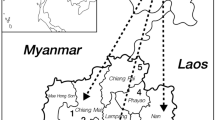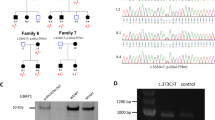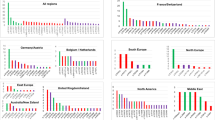Abstract
CONSIDEBABLE interest has been taken over the past twenty years in the level of human serum pseudo-cholinesterase, because it was known that it was altered ina number of pathological conditions. It has been recognized, however, in the past ten years that considerable differences may also exist in healthy people, and that this difference is genetically determined1. Several variants of the enzyme are now known2–5, but the variants which give rise to the most frequently found phenotypes are the ‘typical’ and ‘atypical’ enzyme of Kalow and Genest2. These can be distinguished by their sensitivity to the pseudocholinesterase inhibitor dibucaine. Under given conditions the ‘typical’ enzyme is inhibited by about 80 per cent (‘Dibucaine Number’ or DN = 80), and the ‘atypical’ enzyme by about 20 per cent (DN = 20). The three phenotypes, ‘typical’ homozygotes, ‘atypical’ homozygotes and heterozygotes show a DN of about 80, 20 and 60 respectively. Kalow and Gunn6 found the gene frequency of the ‘atypical’ gene to be 0.0188 in a healthy Canadian population. ‘Atypical’ homozygotes would therefore be expected at a frequency of 1 in 3,000. This is of practical importance because they respond to the usually short acting, and in modern anaesthetics widely used muscle relaxant suxamethonium with a prolonged and dangerous apnœa, the normally short action of the drug being due to its rapid destruction by the ’typical‘ serum pseudocholinesterase. We had the impression that this anaesthetic hazard was more often encountered in persons of Mediterranean origin than in British patients. We have, therefore, determined the gene frequency of the ‘atypical’ gene in British and various Mediterranean populations by measuring the DN. The results are shown in Table 1. It may be noted that only heterozygotes and no ‘atypical’ homozygotes were discovered.
This is a preview of subscription content, access via your institution
Access options
Subscribe to this journal
Receive 51 print issues and online access
$199.00 per year
only $3.90 per issue
Buy this article
- Purchase on Springer Link
- Instant access to full article PDF
Prices may be subject to local taxes which are calculated during checkout
Similar content being viewed by others
References
Lehmann, H., and Ryan, E., Lancet, ii, 124 (1956).
Kalow, W., and Genest, K., Canad. J. Biochem. Physiol., 35, 339 (1957).
Lehmann, H., Silk, E., Harris, H., and Whittaker, M., Acta Genet., 10, 241 (1960).
Harris, H., and Whittaker, M., Nature, 191, 496 (1961).
Liddell, J., Lehmann, H., and Silk, E., Nature, 193, 561 (1962).
Kalow, W., and Gunn, D. R., Ann. Hum. Genet., 23, 239 (1958).
Harris, H., Whittaker, M., Lehmann, H., and Silk, E., Acta Genet., 10, 1 (1960).
Author information
Authors and Affiliations
Rights and permissions
About this article
Cite this article
KATTAMIS, C., ZANNOS-MARIOLEA, L., FRANCO, A. et al. Frequency of Atypical Pseudocholinesterase in British and Mediterranean Populations. Nature 196, 599–600 (1962). https://doi.org/10.1038/196599a0
Issue Date:
DOI: https://doi.org/10.1038/196599a0
This article is cited by
-
The relation of sex, age, smoking status, birth rank and parental ages to pseudocholinesterase activity and phenotypes in a sample of Australian Caucasian adults
Human Genetics (1976)
-
On the geographical distribution of pseudocholinesterase variants
Humangenetik (1975)
-
Apnee a la succinyldicholine: etude d’une population canadienne-française
Canadian Anaesthetists’ Society Journal (1970)
-
Frequencies of Pseudocholinesterase Variants in Icelanders, Greeks and Pakistanis
Nature (1968)
-
Hereditary Deficiency of Pseudocholinesterase in Eskimos
Nature (1967)
Comments
By submitting a comment you agree to abide by our Terms and Community Guidelines. If you find something abusive or that does not comply with our terms or guidelines please flag it as inappropriate.



